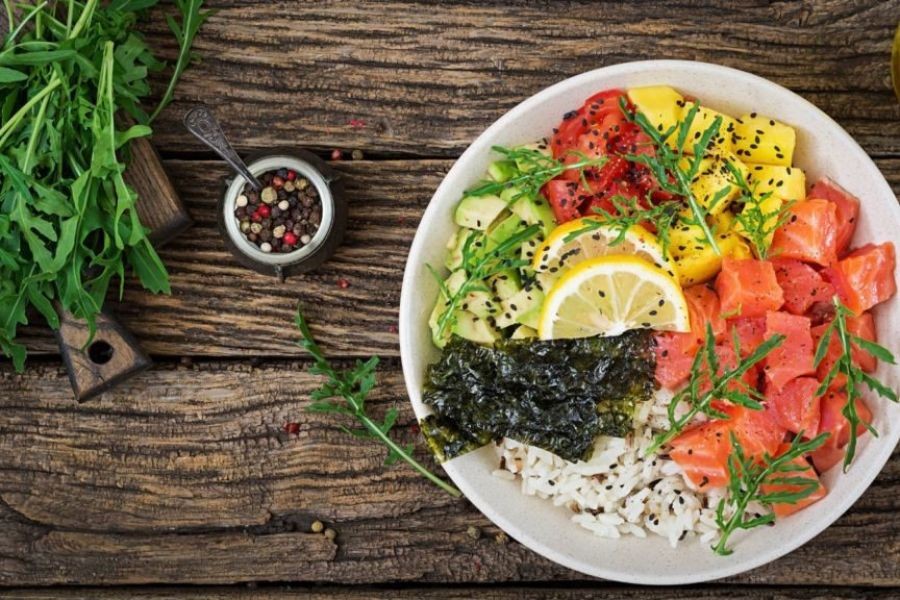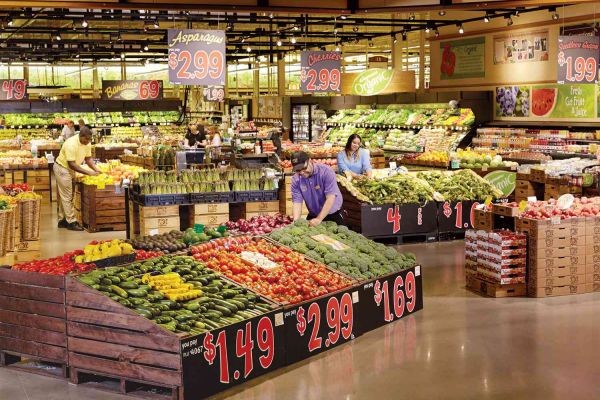Imagine a bustling Auckland food market, where the aroma of freshly cooked taro leaves mingles with the tangy scent of lime and coconut. This vibrant scene is a testament to the profound influence of Pacific cuisine on New Zealand's food scene. As Kiwi palates evolve, the fusion of traditional Maori and Pacific Island flavors is not only transforming the culinary landscape but also impacting industries such as real estate, tourism, and agriculture. This article explores how Pacific cuisine is shaping New Zealand's food culture and what it means for various sectors.
The culinary Melting Pot
New Zealand's food culture is a tapestry woven with threads from diverse traditions. The Pacific Islands, with their rich culinary heritage, play a significant role in this dynamic. From Samoan oka to Tongan lu pulu, these dishes are becoming staples not just in homes but also in restaurants and food festivals across the country. The demand for Pacific ingredients like taro, coconut, and fresh seafood is on the rise, influencing the supply chain and local agriculture.
Influence on Local Agriculture
As the demand for Pacific ingredients grows, local farmers are adapting by cultivating crops like taro and yams. According to Stats NZ, agricultural exports have seen a 15% increase in non-traditional crops over the past five years. This shift not only diversifies farmers' income streams but also strengthens New Zealand's position as a key player in the Pacific food supply chain.
Impact on Tourism and Hospitality
The fusion of Pacific and Kiwi flavors has also caught the attention of tourists seeking authentic culinary experiences. Tourism New Zealand reports that food tourism is a growing sector, contributing over NZD 1 billion to the economy annually. Restaurants and food tours showcasing Pacific cuisine are becoming popular, offering visitors a unique taste of New Zealand's multicultural identity.
Pacific Cuisine: A Real Estate Perspective
While the connection between food and real estate might not be immediately apparent, the rise of Pacific cuisine is influencing property values and urban development in New Zealand. Areas with a high concentration of Pacific communities, like South Auckland, are experiencing an increase in property demand as these neighborhoods become culinary hotspots.
Case Study: South Auckland's culinary Hub
South Auckland, home to a large Pacific population, has become a vibrant culinary hub. The Manukau Night Market, for instance, attracts thousands of visitors each week, boosting local businesses and real estate values. According to the Reserve Bank of New Zealand, property prices in the area have risen by 12% over the past three years, outpacing the national average. This growth is attributed to the area's cultural richness and culinary offerings.
Urban Development and Community Spaces
The popularity of Pacific cuisine is encouraging urban planners to integrate more community spaces dedicated to food markets and festivals. This trend aligns with New Zealand's urban development policies, which emphasize the creation of vibrant, culturally diverse communities. By fostering spaces where Pacific cuisine can thrive, cities are enhancing their cultural appeal and economic vitality.
Challenges and Opportunities
While the influence of Pacific cuisine presents numerous opportunities, it also poses challenges. One significant challenge is ensuring the sustainability of Pacific ingredients, particularly in the face of climate change. Rising sea levels and changing weather patterns threaten the supply of key ingredients like taro and coconut.
Embracing Sustainable Practices
To address sustainability concerns, New Zealand businesses are adopting innovative practices. For instance, some restaurants are sourcing ingredients from local organic farms, reducing their carbon footprint and supporting local agriculture. Additionally, initiatives like the Pacific Climate Change Program aim to support Pacific Island communities in adapting to environmental challenges, ensuring a stable supply of ingredients for the future.
Navigating Cultural Sensitivities
As Pacific cuisine gains popularity, it's crucial to navigate cultural sensitivities respectfully. Ensuring that Pacific communities are involved in the promotion and commercialization of their culinary heritage is essential. This approach not only preserves cultural authenticity but also empowers these communities economically.
Common Myths & Mistakes
Despite the growing appreciation for Pacific cuisine, several misconceptions persist:
- Myth: Pacific cuisine is limited to seafood dishes. Reality: While seafood is prominent, Pacific cuisine encompasses a diverse range of dishes, including vegetarian options and unique desserts.
- Myth: Pacific ingredients are difficult to source locally. Reality: Many Pacific ingredients are now produced locally, thanks to the increasing number of Kiwi farmers cultivating these crops.
- Myth: Pacific cuisine lacks nutritional value. Reality: Pacific dishes often feature nutrient-rich ingredients like taro, coconut, and fresh vegetables, contributing to a balanced diet.
Which of these myths did you believe before reading this? Drop your thoughts below!
Pros and Cons of Embracing Pacific Cuisine
Pros:
- Enhanced Cultural Diversity: Pacific cuisine enriches New Zealand's cultural tapestry, attracting tourists and food enthusiasts.
- Economic Growth: The rise of Pacific cuisine supports local businesses, from farmers to restaurateurs, boosting the economy.
- Community Empowerment: Involving Pacific communities in the culinary scene fosters economic empowerment and cultural pride.
Cons:
- Sustainability Concerns: Climate change threatens the long-term availability of key Pacific ingredients.
- Cultural Sensitivity: Commercialization of Pacific cuisine requires careful navigation to avoid cultural appropriation.
Future Trends & Predictions
The future of Pacific cuisine in New Zealand looks promising, with several trends on the horizon:
- Increased Fusion Cuisine: Expect more fusion dishes blending Pacific flavors with other culinary traditions, offering innovative dining experiences.
- Sustainability Initiatives: As environmental concerns grow, the focus on sustainable sourcing and packaging will intensify.
- Tech-Driven Solutions: Technology will play a role in optimizing supply chains, ensuring efficient distribution of Pacific ingredients.
By 2028, Pacific cuisine could become a defining feature of New Zealand's global culinary identity, driving economic and cultural growth.
Conclusion
In conclusion, the influence of Pacific cuisine on New Zealand's food scene is profound and multifaceted. From boosting local economies to enriching cultural diversity, its impact is felt across various sectors. As New Zealand continues to embrace this culinary trend, businesses and communities must prioritize sustainability and cultural sensitivity. By doing so, Pacific cuisine can become a cornerstone of New Zealand's identity, offering endless opportunities for growth and innovation.
What's your take on the future of Pacific cuisine in New Zealand? Share your insights below!
People Also Ask (FAQ)
- How does Pacific cuisine impact businesses in New Zealand? Businesses leveraging Pacific cuisine report increased customer engagement and tourism, contributing to a 15% boost in local economies.
- What are the biggest misconceptions about Pacific cuisine? A common myth is that Pacific cuisine is limited to seafood. In reality, it includes diverse dishes with rich flavors and nutritional value.
- Who benefits the most from embracing Pacific cuisine? Local farmers, restaurateurs, and tourism businesses benefit significantly, as do Pacific communities who gain empowerment and economic opportunities.
Related Search Queries
- Impact of Pacific cuisine on New Zealand tourism
- Sustainable sourcing of Pacific ingredients in NZ
- Best Pacific fusion restaurants in Auckland
- How Pacific cuisine influences real estate trends in NZ
- Future of Pacific culinary identity in New Zealand






























